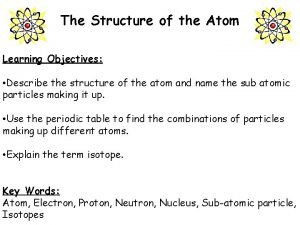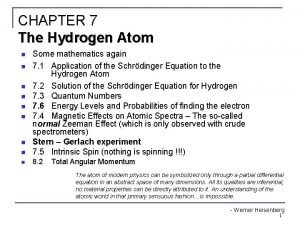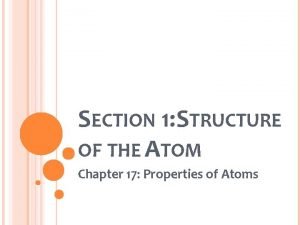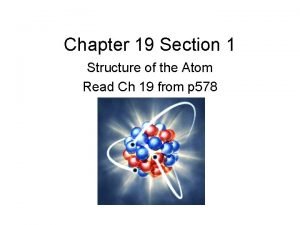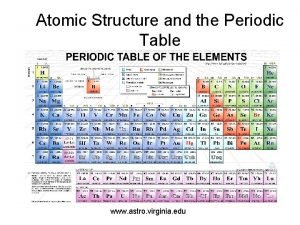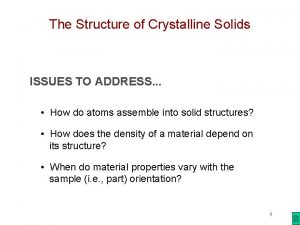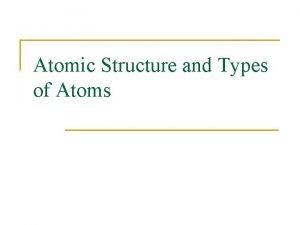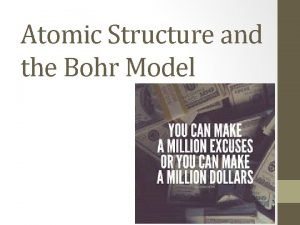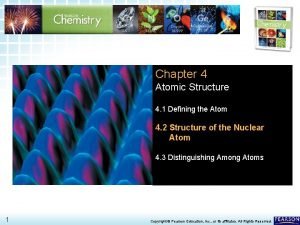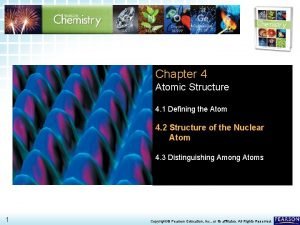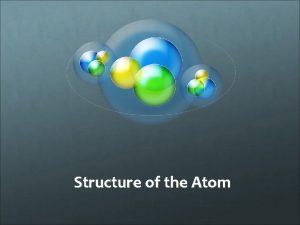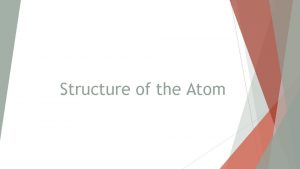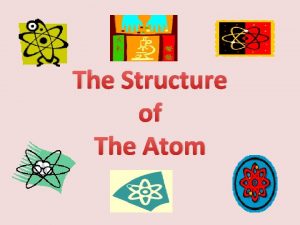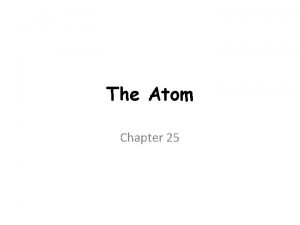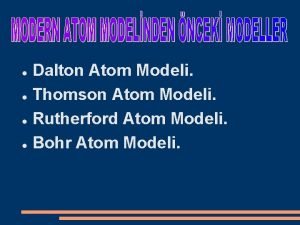Chapter 4 The Structure of the Atom l











- Slides: 11

Chapter 4: The Structure of the Atom l 4. 1: Early Theories of Matter l 4. 2: Subatomic Particles and the Nuclear Atom l 4. 3: How Atoms Differ l 4. 4: Unstable Nuclei and Radioactive Decay

Chapter 4 Standards l l CHEM. A. 2. 1. 1 Describe the evolution of atomic theory leading to the current model of the atom based on the works of Dalton, Thomson, Rutherford, and Bohr. CHEM. A. 2. 1. 2 Differentiate between the mass number of an isotope and the average atomic mass of an element.

Section 4. 1 Early Theories of Matter

Objectives l Compare and contrast the atomic models of Democritus and Dalton l Define the atom

Four Components of Matter l l l Early Greek philosophers associated properties of matter with Water, Earth, Air, and Fire. They thought matter was infinitely divisible This incorrect belief lasted until the 1800 s.

Democritus l l l Greek philosopher (460 -370 B. C. ) First to propose matter was NOT infinitely divisible Atomos- indestructible particles

Democritus’s Ideas l l l Matter is composed of empty space Atoms are solid, homogeneous, invisible particles Different kinds of atoms have different shapes and sizes Differing properties of matter come from the different shapes and sizes of atoms. Changes in matter come from changes in grouping of atoms

Aristotle l l l Criticized Democritus’s ideas about atoms. Invisible particles do not exist - No Atoms! Accepted view for 2, 000 years

John Dalton l l 1766 -1844 School teacher from England Revived Democritus’s ideas about atoms Developed the atomic theory (1803) based on scientific research of the time.

Dalton’s Atomic Theory l l l All matter is composed of extremely small particles called atoms All atoms of an element are identical and specific to that element only. Atoms cannot be created, divided, or destroyed Different atoms combine in simple whole-number ratios to form compounds. In a chemical reaction, atoms are separated, combined, or rearranged.

Atom l Smallest particle of an element that retains the properties of that element World Population = 7, 000, 000 Atoms in a Penny= 29, 000, 000, 000
 The structure of the atom section 2 defining the atom
The structure of the atom section 2 defining the atom Kelemahan teori atom bohr
Kelemahan teori atom bohr Describe the structure of an atom?
Describe the structure of an atom? What is fine structure of hydrogen atom
What is fine structure of hydrogen atom Section 1 structure of the atom
Section 1 structure of the atom Section 1 structure of the atom
Section 1 structure of the atom Structure of an atom
Structure of an atom Atom and its structure
Atom and its structure Atom and its structure
Atom and its structure Niels bohr’s model
Niels bohr’s model Atom and its structure
Atom and its structure Atom and its structure
Atom and its structure


